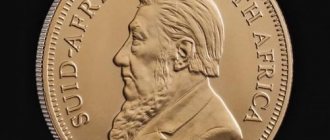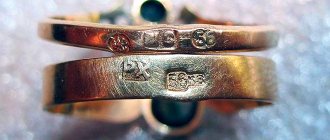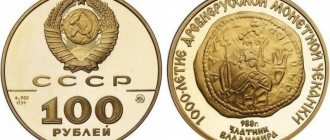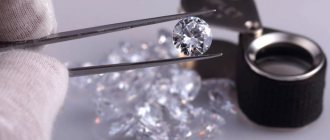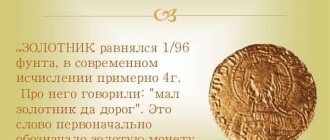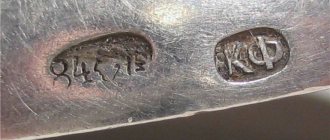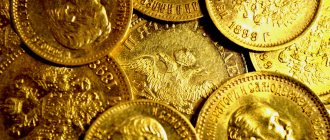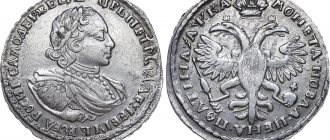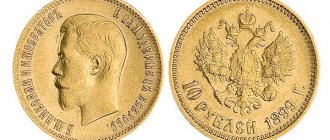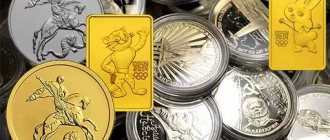There are a lot of people who are interested in antique things. This provokes the mass production of counterfeits. Each type of rarity is studied separately. Numismatics deals with monetary history. To reliably determine authenticity, considerable experience is required. You need to start with common and inexpensive copies. Silver coins are more accessible to the beginning collector. But even in this case, it is important to know what to pay attention to. Before you can distinguish a silver, copper and gold coin from a fake, you need to know the main tools of a numismatist.
"Fake Coin" and "Counterfeit Coin"
Fake
refers to a product created for sale as a collectible or antique item. That is, we are not talking about the nominal value of the item, but about the market value.
A fake can be a copy created from scratch. The material of the fake may be similar to the original, or it may be radically different. To create a fake, genuine coins can also be used, to which some modification is made, simulating a rare year or a rare variety.
Copies are fakes
original coins taken out of circulation (lost the status of a payment mark), if they do not have a special sign indicating
a copy
(replica). The category of counterfeits sometimes includes “fantastic” coins, the originals of which never existed. Such specimens are issued as proof coins.
Counterfeit coins
, created for circulation, are often found in treasures, along with genuine ones.
There are collectors who create exhibitions from such “coins”. Therefore, counterfeit coins sometimes arouse much more interest
than ordinary originals.
The situation is different with fakes, which are sold to collectors under the guise of expensive originals.
. Often a whole performance is staged (“Look, the old house was dismantled...”), as a result of which the buyer acquires a piece of metal, proud that he grabbed a rarity at half the market price.
Acting is also present at Internet flea markets, where counterfeits are exhibited on behalf of simpleton newcomers (the most common options are “I don’t know about coins myself, but these are from my grandfather’s collection” or “I know that they are expensive, but I urgently need money”). What to do to avoid feeding the ever-growing army of scammers
, offering copies at the entrance of almost any shopping center?
The most important rule: never buy items in a category you don’t understand.
Having heard about the high cost of the pictures they saw on the Internet, many grab copies, without even thinking that a valuable coin, issued in several dozen copies, simply physically cannot end up under the floorboards of some dilapidated building on the outskirts of Chelyabinsk. Is it any wonder at the dexterity of the gypsies, who successfully sell even tokens with Bitcoin symbols under the guise of a cryptocurrency that has no physical medium?
Have you ever held an old coin in your hands?
Not really
A smart investment
Silver coins have always attracted and will continue to attract not only those who like to collect valuable things in a collection, but also historians, scientists who write works on numismatics and those who compile catalogs to make a profit from the sale of valuable items.
In Russia there is a fairly authoritative literary resource created by Georgy Mikhailovich, Prince of All Rus', called the “Corpus of Russian Coins”, and there is also pre-Petrine numismatics from Count Tolstoy and other scientific, literary works that served to form modern value, historical value and classification monetary affairs.
Without looking into the essence of the matter, we can say with confidence that the purchase and storage of old silver precious pieces back in the 19th century was considered a matter for people representing the elite of society, and now this primarily reflects a person’s taste, his desire to enrich himself financially and morally, to improve your education.
If buying and selling are a person’s prerogative, then he should know a lot about the subject on which he has chosen. The very first knowledge concerns how to distinguish a fake from the original.
Why are coins counterfeited?
First of all, the counterfeit manufacturer wants to make a profit. Ways to obtain it can be:
- launch into cash circulation;
- making large purchases;
- deception of collectors and numismatists.
There have been cases in history when the production of counterfeits acquired a state character. This was done with the aim of undermining the economy of a competing country. Here it is immediately necessary to distinguish between the two concepts of fake and counterfeit.
The first is created with the aim of obtaining illegal profits after they are put into circulation. A counterfeit is created on the basis of specimens that have lost the status of money for payment (for example, counterfeit coins of Tsarist Russia) for sale to collectors and antique dealers. It can be remade in whole or in part, where an antique coin is altered to imitate its rarity.
As a result of the mass production of copies, numismatists have appeared who choose a fake from a certain manufacturer for their collection.
Most primitive copies have obvious differences from the original for several reasons. First, manufacturers of copies deliberately introduce differences so that they do not get caught for making counterfeits. Secondly, creating an exact copy is a very expensive operation, and during mass production they try to reduce the cost as much as possible. Thirdly, a copy of a rare coin is sometimes made not from the original, but from a cut, transferring all the features that indicate a fake.
Categories of fakes
Although the goal of counterfeiters has always been the same - enrichment, the purpose of the coins was different. Conditionally counterfeit coins were divided into 2 categories:
the first category is for release into circulation, the second category is for deceiving collectors.
Counterfeit coins of the first category were replicated and made by minting or casting a mold. Genuine ordinary coins were used to make the molds. Counterfeits were minted not only by local craftsmen, but also by foreign mints .
Coins classified in the second category differ from each other depending on the period of their manufacture.
Counterfeit coins produced in the 19th and early 20th centuries were mostly primitive fakes , since they were produced using cheap technical equipment and without professional metal carving skills. Most often, casting and embossing were used. However, there were also counterfeits that were made by modifying genuine coins. Hand-cut coins were the least common.
From the second half of the 20th century to the present day, counterfeit coins have been produced using industrial multifunctional equipment, which has led to a dramatic improvement in the quality of counterfeit coins intended for collectors. The nature of the modern production of counterfeits has become more widespread, as single craftsmen have been replaced by industrial workers who use technical equipment for other purposes.
Checking the main characteristics of the coin
Any coin of the royal era has its own characteristics:
diameter, thickness, weight. These parameters are the first thing that must be checked when purchasing coins with the profiles of emperors or empresses.
Replacing expensive silver with copper-nickel or brass, followed by painting, will ensure a noticeable discrepancy in weight with the original.
Sometimes craftsmen who have heard about weight cleverly adjust the “product” to the desired weight, but then a difference from the original in thickness or diameter will begin to be observed. In some cases, even a simple magnet can save the day, to which the “silver coins” of the grimy road worker begin to stick.
Experienced collectors can easily distinguish the original by its characteristic ringing sound by carefully dropping a suspicious coin onto a surface. A fake can also be given away by yellow bald patches on the “silver” relief when the fake has been artificially aged.
When purchasing a rare or infrequent coin, you should pay special attention to the following parameters:
- weight;
- thickness;
- diameter;
- magnetic properties.
The difference in the weight of metals with the same volume has been known since the time of Archimedes, who, according to legend (thanks to displaced water), determined the insufficient purity of gold in the crown of the Syracusan king Hiero II. The cunning jeweler replaced part of the gold with silver, which is lighter in weight but has a larger volume. Nowadays, copy manufacturers often do not take this difference into account. Therefore, on the scales, the original ruble of Nicholas II and its copper-nickel copy will show different values from each other.
However, mandatory weight checking has already become a habit among numismatists, so replica makers are looking for various ways to adjust the weight to the value indicated in the catalog. One of them was a change in thickness. Therefore, it is useful to know the approximate thickness of a genuine coin and, if there is a noticeable deviation from it, refrain from purchasing a suspicious specimen.
Adjusting the weight for copies of ancient coins can also be done by changing the diameter.
A beginner is often not aware of what diameter the original should have, and deviations of a few millimeters to a smaller or larger direction do not cause him any feeling of alarm. Checking the diameter is also useful when identifying rare varieties whose edge is left without decoration (inscriptions or corrugations inherent in the standard specimen). Very often it turns out that the edge has been “cleaned” by grinding and subsequent grinding.
Reducing the cost of production forces us to abandon non-ferrous metals that have become more expensive, using cheap ferrous alloys, the surface of which is coated.
But a cheap copy here is given out by its magnetic properties, since neither gold nor silver react to a magnet.
edge
On the numismatists forum, when determining the authenticity of a particular expensive coin, it is almost mandatory to present the edge. Edge rolling is a rather complicated operation. Therefore, copy manufacturers often leave the edge without decoration, or use the simplest manufacturing solution.
This is an authentic ruble of Elizabeth Petrovna from 1744, minted in Moscow. The edge of the original is convex and tells about the place of minting: “MOSCOW COMMON YARD”. The raised inscription is characteristic of many coins minted in the 18th century.
This is a copy that is immediately given away by the pressed inscription. This type of edge rolling began to be used after the modernization of the St. Petersburg Mint in the 18th century, when mechanisms of a new generation were imported. He talks about the fineness of the metal or its ligature weight. Even by chance, it could not have appeared on the coins of the previous century.
However, copy makers are studying numismatic forums. Above is a funny attempt to create a convex edge design aimed at a novice collector who has never seen a genuine Ivan Antonovich ruble.
It is extremely rare to reliably recreate a herd. Above is a comparison of the original bunch of rubles from 1921-1922. (top coin in the photo) with a bunch of their copies. We told the story of how numismatists were offered magnetic 50 kopecks from 2006 with a grooved edge. After the purchase, an inspection revealed a different gurgling technology than that used at the mint. In addition, the number of corrugations differed. Verdict: The genuine coin was marked with corrugations outside the mint. In the same way, counterfeits of 3 kopecks from 1924 with a grooved edge are also screened out. On rare originals, the edge corresponds to the grooves of a common imperial coin of the same denomination. The notches on the counterfeit edge simply will not coincide with the grooves on the genuine coin if they are placed on top of each other in a column.
How to determine the authenticity of a coin
Until the beginning of the 20th century, coins were cast and minted, followed by hand finishing of each of them. For this purpose, specially prepared forms based on the original were used.
Years later, thanks to technological progress, the number of counterfeits increased significantly. Sometimes entire workshops worked on them, stamping them on molds. It has become much more difficult to distinguish a modern remake. Modern craftsmen often resort to the method of high-precision casting. As a result, the clarity of the image and small elements disappears. Under a magnifying glass, blurriness is clearly visible, small bubbles appear.
You can reliably check a coin only by holding it in your hands and having collecting experience. It is important to evaluate the edge, weight and size, the quality of the metal and patina (the layer that appears after some time due to the oxidation of the metal). Craftsmen very realistically fake patina using baking, painting, fumigating with tobacco smoke and others.
If the technical specifications
fall within the acceptable tolerance range, begin a close visual inspection.
Pay special attention to the edge
. A smooth edge immediately gives an alarm (with the exception of cases when the circulation actually has an edge without decoration). Of course, there is a chance that this is an original coin that has avoided the gurtilla ring, but it is extremely small.
The first wave of modern fakes is now easily screened out on this basis. It is imperative to make sure that the design of the edge corresponds to the given period. Catalogs can help you here.
A convex edge or an edge with a complex pattern is still difficult to imitate, so replica makers replace it with a pressed or corrugated one.
If the originals have a depressed edge, you should compare it with the edge of a suspicious coin: usually you will always find discrepancies in the shape of letters or even grammatical errors.
Experts identify fake patina by several signs: it appears on the metal in the form of round spots and only on the surface, without affecting scratches and abrasions.
Indicators by which a fake differs from the original:
- The obviousness of other metal under the abrasions is a sign of a low-quality Chinese counterfeit.
- Excessive shine indicates recent manufacture. A matte finish is typical for gold fakes that do not contain real gold. A greasy sheen indicates a high zinc content in the alloy.
- When viewed through a magnifying glass, surface heterogeneity is noticeable on fakes.
- The weight reveals the true nature of the metal. Experts can visually determine whether the diameter and thickness correspond to the mass.
The last point is very important for correctly assessing the condition of the coin. Knowing this fact, when making a fake, craftsmen drive it to the original weight. At the same time, replacing the metal affects the dimensions that need to be taken into account when purchasing. You need to check the dimensions using reference books.
Before determining the authenticity of a coin from Tsarist Russia or another era at home, you need to familiarize yourself with the hydrostatic weighing method.
The density of a metal is equal to its mass divided by its volume. This is a constant value, knowing which you can check the correspondence of volume and weight. Density of copper - 8.94 g/cm3, gold - 19.32 g/cm3, silver - 10.5 g/cm3. Brass is much lighter than noble metals and slightly lighter than copper - 8.73 g/cm3.
Primitive copies of Russian coins are revealed by banal ignorance of the Russian language. For example, the manufacturer of a fake stamp did not see the difference between the Russian letter “I” and the Latin letter “N”. If you look closely, you will notice that he easily replaced the letter “C” with the Roman numeral “II”.
Gallery of the most popular copies
Making a stamp on an ancient coin that is similar in appearance to the original is not a cheap pleasure. Therefore, only mass production pays off. Let's look at the most common copies, while comparing them with the originals:
This is an original and a copy of a rare 1 ruble coin from 1912 “This Glorious Year”. In the original, the detailing of small elements is maintained. The font of the inscription on the reverse is clear. The font of the edge inscription corresponds to the given minting period.
In the copy of this coin, the detailing of small elements is disrupted (as can be seen when studying the copy under high magnification). The font of the inscription on the reverse is blurred (the clarity of the letters characteristic of coinage is absent). The font of the edge inscription has deviations, especially noticeable in the execution of the number “4”.
The original of the last commemorative ruble of the Russian Empire “Gangut” (left) and its primitive copy (right). Just look at the caricatured figure of St. George the Victorious on the coat of arms of Moscow. The maker of the copy was also lazy in depicting the four nautical charts, limiting himself to light strokes that vaguely resembled the lines on the original.
Beginners are often offered a copy of silver 2 rubles from 1722 under the guise of an original. This is an incredibly rare coin that has a proof status, but has come down to us only in the form of remakes. Its average market price is one and a half million rubles. But it’s enough to put the original (in the illustration it’s the coin on the right) and the copy (it’s on the left side in the photo) side by side, and the eye immediately catches many differences. The copy is missing a lot of small elements of the design (this can be seen at least by the crown on the reverse).
The rubles of Nicholas II are also being counterfeited en masse. The photo below shows the obverse of a 1903 silver ruble (left) and two copper-nickel copies. The fake in the center is annoying with a vague pattern. On the copy on the right, the font of the legend is quite elegant, but the imperial bas-relief was clearly not made by a master of sculpture.
Let's look at the reverses. The copy in the center again has obvious blurriness in the image. In addition, the engraver was too lazy to put a dot after the “G”. On the copy on the right, the execution of the State Emblem is done in a different manner than on the original. Just look at the tail.
And finally, one of the most expensive coins of the Russian Empire is the trial portrait ruble of 1796. If the original (in the photo - the coin on the left) shows us the pinnacle of medal art, emphasizing the grace of the imperial face, then the copy appears as a lopsided freak who has only an extremely distant resemblance to Paul I.
Working with catalogs
Experts sometimes recognize a fake without even looking at the edge. Under the eagle’s paws on the copy we see the letters “I” and “M” - the initials of mintzmeister Ivan Markov. Looking at the catalog, we learn that such a combination was minted only at the St. Petersburg Mint. That is, under the portrait of the Empress there should be “SPB”, but there are clearly visible letters “MMD”. The stamp for the copy was made from the obverse and reverse of two different coins.
Studying the catalog allows you to weed out non-existent coins. Copy makers sometimes make fantastic products that did not exist in nature, despite the fact that these “coins” look quite realistic.
The illustration below shows a coin that cannot have an original. After all, the first gold ten-ruble coins of this type appeared only in 1898 (gold imperial ten-ruble denominations with a portrait of Nicholas II were also minted in 1895, but these coins look different).
Knowing the circulation of a particular numismatic item can be of great help. If only a few dozen of these coins were minted, the likelihood that the treasured original is in the hands of a tattered peasant who wants to foist it on you tends to zero.
If earlier the production of counterfeits was such a labor-intensive process that not everyone risked taking it on, now it is not so difficult to make the necessary stamp and start your own minting. Therefore, when purchasing a rarity, you should carefully compare the details of its image with the obviously genuine one
copy.
Forgery artists try to get rid of discrepancies in the drawing using high-precision casting. But in this case, the clarity of the elements conveyed by the stamp’s impact is lost.
Under high magnification, the elements of the picture appear blurry. The transition of the letters into the coin field, instead of a right angle, forms a rolling hill. You can see the remains of miniature bubbles that were created when the copy was cast. Thin elements become somewhat thicker. To hide traces, such specimens are artificially aged and even the relief is erased.
